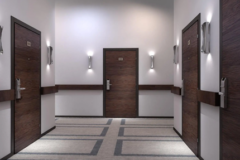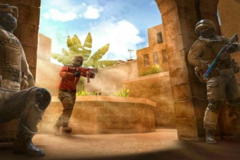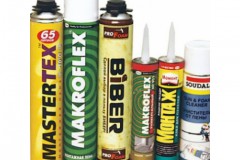Consider the second case.
Next, remove all temporary fixtures, except for those to which the fabric is attached to the corner bar and carefully attach the fabric to the inside to the next wall. This is necessary so that the fabric does not shift when you pull it. Now we replace temporary mounts to the corner bar with constant — furniture cloves or brackets: here the fabric is attached every 5-6 centimeters on the strips. Do not forget that sagging can be excluded only if the fabric is slightly pulled when fixed. After that, you can remove the fabric from the neighboring wall and continue to fix it: first at the top, every 20 cm every 20 cm. Thus, the corner bar remains under the cloth, and the entire canvas is well fixed on top. Next, you need to fix the fabric on all the strips located on the wall and, finally, from below. It is important to observe the correct tension of the fabric all the time — so it will not sag and will not go in waves and wrinkles. The edge of three centimeters remaining from above and below is needed for better and accurate consolidation. Take the thin bar and, wrapping it with excess of the fabric, press it to the upper edge and fix it with small nails. Fix the bar every 10-15 centimeters and watch that the picture does not shift. In the same way, process the lower edge and doorways. The doorway can be originally cut into the fabric (if you are confident in your tailor art) or cut out after fixing the fabric. Consider the second case. Retreat 3-4 centimeters from the edge of the door frame so that the excess of the fabric remains and cut the fabric, strictly monitoring the vertical of the cut (the nut on the thread helps to cope with this). Then either use the bar or just turn the fabric by laying with cardboard, and fix it with brackets or small cloves.









Оставить комментарий